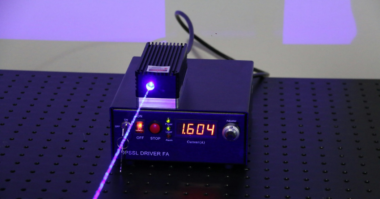Modern technology can be a difference maker when it comes to constant improvement goals within a maintenance and reliability program.
At the 2015 SMRP Conference in Cincinnati, Ohio, Oct. 13-15, Justin Fox of The Prometheus Group delivered an excellent presentation demonstrating how we can take advantage of data input, processing, planning and analysis tools to effectively improve maintenance and reliability best practices.
“You can simplify the tools you use to measure data and improve the process,” Fox explained. “Integrate simple tools with complex systems and then rely on the important data.”
Fox said some of the modern technologies that can help accelerate the process include complex-yet-effective computerized maintenance management system (CMMS) capabilities and continuous advancements in user experiences. Simplifying the tools can have an immediate impact on the improvement of data integrity. Also, it’s important to integrate the tools with system.
Fox described three key strategies to achieve fully-integrated modern tools for maintenance:
- Mobility
- Integrated Planning and Scheduling
- Performance Analytics
These strategies are used in a closed loop maintenance plan that has eight key components: identify, review, plan, schedule, execute, document, evaluate and learn. Fox explained that maintenance is non linear. “It is important to understand the full cycle and take advantage of all aspects,” he said.
Here is more detail about how these eight components are useful in the closed loop maintenance plan.
- Identify – It seems simple, but the first step is to know what the problem is. This can be easily determined by compiling input at the source, simplifying the screens, improving the data, having a system that provides immediate duplicate checks and technology that produces instant feedback.
- Review – It is vital to have the right information and then to take action. To accomplish this, you can review recently identified issues immediately and check recent equipment history. This allows professionals to make informed decisions more quickly.
- Plan – At this stage, it is important to make sure you have right people, the right materials and the right timelines. Plan from the field and carefully review all the history and documentation. Study trend performance and then enter tasks, document materials used, plan for execution and leverage best practices.
- Schedule – Once you get the plan in place, you must stay on track. Work with your team to build a true, attainable schedule.
- Focus on planned jobs that can be achieved.
- Consider outside interactions from more than just maintenance.
- View long term and short term goals together.
- Create finite schedules based on true capacity loads.
- Deploy and track schedules with constantly live information.
- Execute – Once the first four stages are in place, it’s time to go do the work and perform. Paperless execution can build efficiency. Use technology to pull schedules directly down to a mobile device, and use electronic documentation. You can use programs that have pick lists with stock inquiry and storage location. Perform the inspections, and submit the measurements and execute the plan that is in place.
- Document – How effective was the plan and the execution? How long did it take? Immediately measurable results can save time and also improve reliability. Modern technology can produce time entries from execution to document completion. Failure modes and repair methods can be updated to provide a useful history. Close out failure time stamps for accurate meantime analysis, and document accurate details from the source. Use a program that can standardize and simplify entry requirements.
- Evaluate – How did we perform in execution. Did it work? How can it be better? Create real-time performance analysis. Schedule compliance key performance indicators (KPIs) that can be measured immediately. Reliability metrics can constantly be trended, and actionable data can be made readily available for data mining. It’s all actionable and trusted because it’s real time.
- Learn – Now that you have a record and a history, you can use it, analyze it and move forward. “Continuous improvement from results is the name of the game,” Fox said. Develop a system of trend compliance over time. Analyze failure rates by object type and failure modes. Dig into the data for root-cause analysis and build the action plans from presented information to constantly improve.
To recap, here are some tips on how to take maintenance to the next level.
- Utilize mobility for enhanced data entry capabilities. Make sure you are at the right source.
- Use effective planning and scheduling practices for executable schedules and visibility. Make sure updates are live and you can see it immediately.
- Develop automated metrics tracking for continuous measurement and improvement. Track everything you are doing and take action right now.
- Apply constant integration among all parts for seamless interaction. This will help to improve from the beginning to the end.
This is Part One in a series of blog posts highlighting informative sessions about maintenance and reliability from #SMRP2015.




Comments